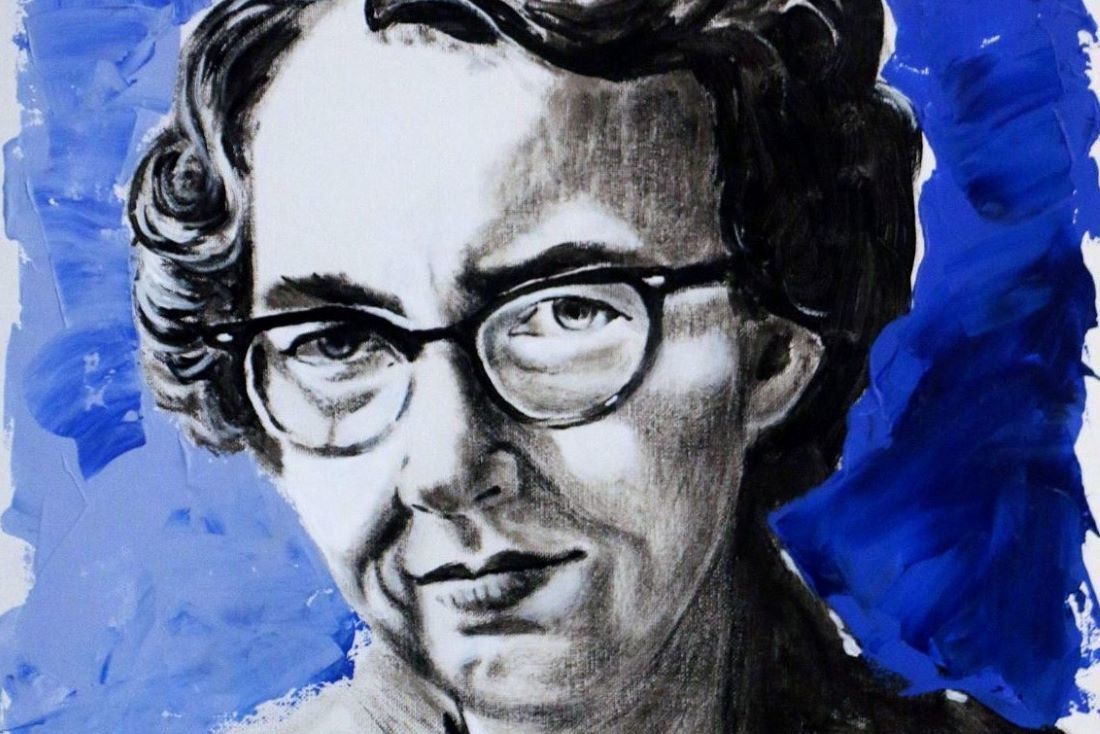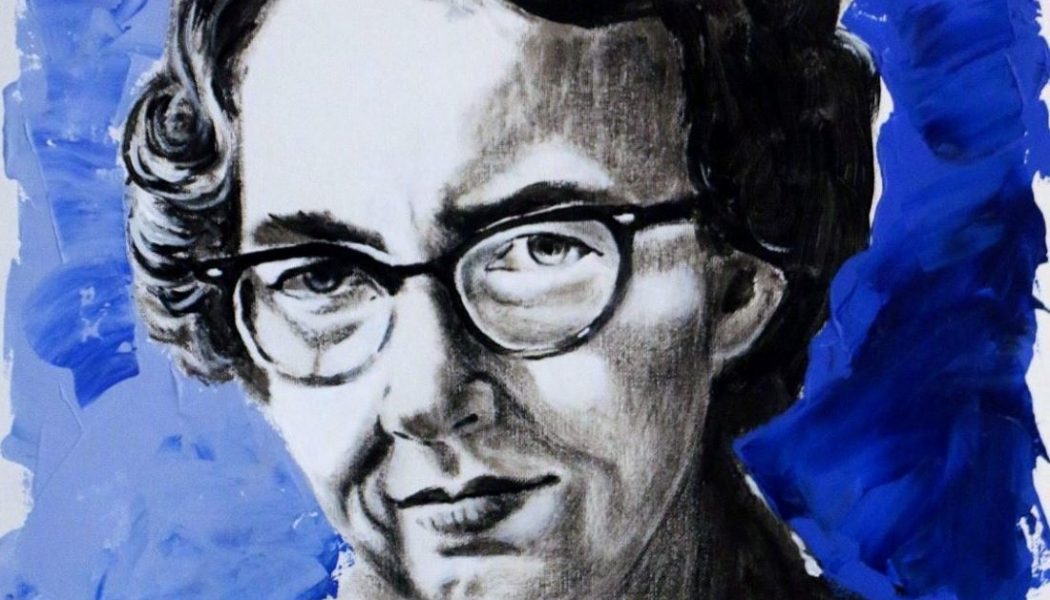
Flannery O’Connor once received a letter from a college professor asking her, on behalf of his students, to intervene in their interpretative conundrum over her now-canonic short story “A Good Man is Hard to Find.” Most readers of O’Connor will know this story, so I will briefly sketch it: Essentially, the professor and students were convinced that the second half of the story, following the car crash, in which the family meets the Misfit and his gang, must be a dream conjured by Bailey, the driver of the car. O’Connor replies:
The interpretation of your ninety students and three teachers is fantastic and about as far from my intentions as it could get to be. If it were a legitimate interpretation, the story would be little more than a trick and its interest would be simply for abnormal psychology. I am not interested in abnormal psychology.
There is a change of tension from the first part of the story to the second where the Misfit enters, but this is no lessening of reality.
One more letter bears mentioning. In O’Connor’s 1960 essay “Some Aspects of the Grotesque in Southern Fiction,” she writes:
I once received a letter from an old lady in California who informed me that when the tired reader comes home at night, he wishes to read something that will lift up his heart. And it seems her heart had not been lifted up by anything of mine she had read. I think that if her heart had been in the right place, it would have been lifted up.
Over the past 20 years, whenever I teach O’Connor’s stories, I provide the students with these two letters. I provide them for two reasons:
- Because they contain perhaps the clearest articulation of her ethic when it comes to the way she regarded her characters and,
- It shows students how she regarded her readers, especially those who had the temerity to question the meaning of her work.
Characters are not puppets deployed to stand in for or represent larger ideas or issues, and the meaning of any story is not something that can be arrived at intellectually; it must be felt.
This is all to say that Flannery O’Connor did not care if you liked her work, and she certainly did not care, it would seem from her letters, if you liked her. Writing was not for her a means of making a point or gaining admiration, though, being human, it is hard to imagine that she was not pleased at times with herself and her success. Writing for her was a means of understanding herself: “I write because I don’t know what I think until I read what I say.”
And so with “liking” her or her work off the table, what is left when one encounters her stories, her essays, and her many letters, some which are filled with racist sentiments? What is the appeal of reading Flannery O’Connor? After all, O’Connor is a writer who haunts you. She is so exacting, so unsentimental, and so (seemingly) unabashedly herself that it is easy to come to hate her, like that friend who is always right; who is successful in everything that they do. Everyone might respect them, but no one really likes them.
And yet, in spite of, or maybe because of, her dogmatic worldview and recalcitrant persona, O’Connor attracts many fans, especially Catholics, who see her, along with Walker Percy and Thomas Merton, as the last of the true Catholic writers.
What is hard to like, and should not be a matter of taste, is her regular use of the N-word in her correspondence, and her general ridicule and condescension of Black people. This was especially the case with those Black people whom she believed were outspoken and self-righteous. For example, James Baldwin, whom she criticized in a 1964 (the very year she died) letter to Maryat Lee in the following way:
About the Negroes, the kind I don’t like is the philosophizing, prophesying, pontificating kind, the James Baldwin kind. Very ignorant but never silent. Baldwin can tell us about what it feels to be a Negro in Harlam [sic] but he tries to tell us everything else too.
Also difficult to like is her disdain, in a 1963 letter to Betty Hester, for her fellow Southern writer Eudora Welty’s masterful story “Where is the Voice Coming From?” on the grounds that it is too “topical.” Had O’Connor not gone on to write her own “topical” stories, such as “Everything that Rises Must Converge” and “The Displaced Person,” which deal, respectively, with the integration of buses in Georgia and the bigotry shown toward European refugees fleeing the Holocaust, we might be having a different conversation right now, but she did write them, and they are exquisite, but they also make her a hypocrite.
But, her last words on the matter, suggest that maybe it was not so much the topicality that bothered her. She writes: “What I hate most is its being in the New Yorker and all of the stupid Yankee liberals smacking their lips over typical life in the dear old dirty Southland.”
A little under 60 years later, enter another article in The New Yorker—“How Racist Was Flannery O’Connor?”—by a Northern intellectual, Paul Elie, who, in stature and belief, quite resembles some of the characters who populate Flannery’s fiction. His essay is about O’Connor’s hypocrisy when it comes to her racial politics, but also alleges complicity (if not willful obfuscation) on the part of O’Connor scholars when it comes to her racism. Like Welty’s story, Elie’s essay comes at a moment in American history when the country is in racial turmoil following the killing of a black man.
What is scandalous to some about Elie’s essay are his allegations of racism; that no one yet has had the guts to really take her to task for it. What is scandalous to others is that it confirms what they felt that they knew long ago, and so why on earth are O’Connor supporters so surprised?
In this way, the article captures the zeitgeist of the moment: there are those (mostly white people) who deeply wounded by allegations that someone whom they love and admire could be racist, and there are those (mostly black, but with a growing segment of white allies) who are dedicated to making sure that this moment of sea change is seen through all the way to its logical conclusion, which is to tear down (literally and figuratively) every monument, ritual, tradition, and narrative in support of white supremacy. It seems we are at an impasse. Or, are we?
If we follow the logic that O’Connor puts forward in her own stories, essays, and letters, then no one, except maybe for Angela Alaimo O’Donnell, whose new book Radical Ambivalence: Race in Flannery O’Connor (read an excerpt here), which Elie both cribs from and dismisses in a disingenuous way, has reason to be upset. O’Connor was a racist, even if a reluctant and reflective one. Her letters clearly show this. And scholars, as Elie suggests, have found ways to defend these comments. Though I would be careful, following Amy Alznauer, when saying “white scholars.” No single white scholar, up until O’Donnell, has so seriously and thoroughly examined her work in the context of these letters. Instead, we have a series of essays written over the years who try to explain away accusations of racism or somehow accommodate her remarks by pointing to her beautifully crafted stories in which racist characters are treated to humiliating but, ultimately, soul-saving ends.
To this reader, the final destination of the souls of her fictional characters is not enough to clear her of racist allegations. And what is interesting is that at the moment defenders of O’Connor against these allegations do not believe so either. Instead, they turn to the premise that though O’Connor did in fact pen racist statements that she was so aware and ashamed of her sinful bigotry—and, didn’t you know that O’Connor had black friends?—that her stories balance the ledger. Ralph Wood, the preeminent O’Connor scholar of the past 30 years, argues in “Where Is the Voice Coming From? Flannery O’Connor on Race” that O’Connor was in fact heroic for having transcended these sinful lapses, and transcended the mean cultural beliefs and manners of her native Georgia through her creativity.
This is a claim that must be looked at more closely, not because O’Connor currently languishes in Hell (let’s leave that to God), but because it contains within it a dangerous mythology that I believe O’Connor herself would reject. In her 1963 essay, “Fiction is a Subject with a History—It Should be Taught that Way,” O’Connor says:
In our fractured culture, we cannot agree on morals, we cannot even agree that moral matters should come before literary ones when there is a conflict between them.
Here she is indicting an educational system she believes does little more than pander to the tastes of students for literature that is modern in its content and temperament, overlooking the reality that students have little to no foundation in literature to help them contextualize, and truly appreciate, what they are reading.
We clearly find ourselves in a moment where there is a conflict between moral and literary matters. The strength of her stories is not in doubt (for now), but clearly her moral integrity is. But how do we re-consider her work given this fact?
Why not follow O’Connor’s own guidance on the teaching of fiction? Doing so would require us to make one thing very clear from the outset: that O’Connor’s work does not directly “combat racist attitudes,” as Jessica Hooten Wilson claims in her rebuttal of Elie’s article. Such a label, according to O’Connor’s pedagogy, would not be helpful in the least. Instead, we would need to read her in the larger context of her predecessors and contemporaries. Imagine for a moment, reading O’Connor within the context of Harriet Beecher Stowe, Margaret Mitchell, Richard Wright, Zora Neale Hurston, Ralph Ellison, James Baldwin, and Harper Lee. (Note that O’Connor refers to none of them in her letters, except Baldwin and Lee, and in an unpublished letter she calls Lee’s 1961 Pulitzer-winning novel To Kill a Mockingbird, “children’s literature.”)
Such a course of study would satisfy O’Connor’s call for treating fiction as a subject with a history, and the product of an author’s individual and peculiar vision, not an exercise in “social studies, or little lessons on democracy or the customs of many lands,” as she warns. Reading in this way we would be able to see the different ways that authors have rendered racism, but not with the goal of proclaiming some work racist and some fighting racism, rather, for understanding and reflecting on our own participation and complicity in racism.
Ultimately, though, we must recognize that we have been led into this conversation over O’Connor’s racism on false premises. First of all, note that Elie’s article was titled in the June 22nd edition of The New Yorker, “Everything That Rises.” It is only the web edition that bears the click-bait title “How Racist was Flannery O’Connor?” To ask “How racist” a certain author’s work is or “how anti-racist” it is is determined largely by the action that takes place in the reader and then in the actions the reader takes as a result. To quote Baldwin in his masterpiece of film criticism The Devil Finds Work:
A story is impelled by the necessity to reveal: the aim of the story is revelation, which means that a story can have nothing—at least not deliberately—to hide. This also means that a story resolves nothing. The resolution of a story must occur in us, with what we make of the questions with which the story leave us.
Be that as it may, that does not stop readers and critics from weighing in on how we ought to read O’Connor, but that may soon be rectified as a new generation of fans, scholars, teachers, and students begin to evaluate her work. Those evaluations will no doubt break with O’Connor’s conservative pedagogy, and will likely start from the premise that private beliefs and statements do matter when evaluating claims that the work is anti-racist. It is also likely that such reconsiderations of her work will begin from the premise that private statements of belief matter, insofar as they affect and cast doubt on the motives the writer has when rendering black characters and scenes in which black and white characters interact.
This is work that Toni Morrison began in 1992 with the publication of Playing in the Dark, in which she argues:
Living in a nation of people who decided that their world view would combine agendas for individual freedom and mechanisms for devastating racial oppression presents a singular landscape for a writer. When this world view is taken seriously as agency, the literature produced within it and without it offers an unprecedented opportunity to comprehend the resilience and gravity, the inadequacy and the force of the imaginative act.
With O’Connor’s agency and force in mind, let us now also consider the inadequacy of her work. While we might be able to credibly say that O’Connor as an artist set about in her stories to render the ugliness of racism, to what end? To say a thing is ugly, especially for a writer like O’Connor who rarely, if ever, offers us loveliness, is no surprise, especially when she believed that the ugliness of her characters is regularly burned from them by violent confrontations with the Other.
The challenge of O’Connor’s work, especially to students and bad teachers, is that we never see moments of actual repentance, not even in “Revelation,” in which Mrs. Turpin is treated to a rapturous vision in which “white-trash . . . and bands of black n—— in white robes and battalions of freaks” lead a heaven-bound procession, with the respectable white folks bringing up the rear. Instead, Mrs. Turpin joins a growing parade of dead, wounded, and deeply confused white grotesqueries who are dispatched in the midst of their sinful acts. This is its own pedagogy, of course (cautionary tales for racists or racist sympathizers, who, it needs to be said, are also racists), but it is also akin to a kind of Hayes Code for anti-racist fiction—all racist characters must meet a humiliating end—which O’Connor also would have railed against.
To complicate matters, O’Connor’s tendency to rub out, while also lifting up, her racist characters is consistent with her view of her own aesthetic. In her essay “The Grotesque in Southern Fiction” she aligns herself with Nathaniel Hawthorne, who claimed not to be writing novels but “romances,” and in his claim “anticipated” a modern “orthodoxy” for reading novels in which the reader “Associate[s] the only legitimate material for long fiction with the movement of social forces, with the typical, with fidelity to the way things look and happen in real life.” Perhaps, that is what one could call O’Connor’s stories featuring bigots: “anti-racist romances,” parabolic stories that present us with slow-motion, grace-fueled, and sometimes strained, epiphanies. So where can we go from here?
Paul Elie closes his article claiming that “there is a way forward, rooted in the work.” It is a late, brief, and weak call to action in which not much is risked, but it is important because it gestures, intentionally or not, toward Morrison’s Playing in the Dark, where she argues that by paying close attention to white writers’ imaginative renderings of Black characters, we begin to find, as she says of Huckleberry Finn, a “more beautifully complicated work that sheds much light on some of the problems it has accumulated through traditional readings too shy to linger over the Africanist presence at its center.”
That is what is called for here with O’Connor. Letters revealing her awareness of her sin and private conversations later orally conveyed to scholars offering evidence that she knew she was committing a sin is just a start. We need to re-evaluate her motives for writing fiction in light of these statements. This means questioning her own theorizing, especially the concept of the “action of grace” and its impact on her stories. O’Connor wrote in Mystery and Manners:
I have found, in short, from reading my own writing, that my subject in fiction is the action of grace in territory largely held by the devil. I have also found that what I write is read by an audience which puts little stock either in grace or the devil. You discover your audience at the same time and in the same way that you discover your subject, but it is an added blow.
The question of who is discovering whom is quite compelling. For readers who have not done what O’Connor suggests is a requisite foundational reading, her stories read as morally righteous fables. They suggest that as long as bigots get theirs in the end, and as long as there is some sort of spiritual reckoning—which in O’Connor are famously mysterious in their outcomes—then the story is anti-racist. Not true.
As O’Connor wrote, the “total effect of a novel depends not only on its innate impact, but upon the experience, literary and otherwise, with which it is approached.” If we agree with her statement, then no work of art, can be anointed anti-racist. Readers must bring to the page some prior experience that creates in them an openness and willingness to hear and see this possibility.
While the writer should always strive to appeal to the reader’s highest self, the racist reader is not likely to be moved to change their beliefs, especially white readers who have been raised in a country where Christianity has a long and well-documented history of fashioning an image of Jesus, as O’Connor wrote, that suits each person and congregation’s individual needs; instead, they are likely to see O’Connor as O’Connor saw Baldwin, as self-righteous and presumptuous.
But in the end, as is typical, talk of O’Connor’s racist vs. anti-racist qualities, focuses too much on a generic, artificial reader, a reader who is ultimately, thoughtlessly, imagined as white.
What of the Black reader’s experience? How efficacious is O’Connor’s work to those who find themselves slurred, dehumanized, and used as agents of white salvation? This will be the real test of O’Connor’s legacy: how will her work hold up under the burning grace of this moment?








